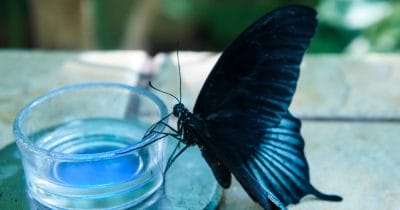
There’s nothing more romantic than taking a vacation with your loved on and packing it full of lovey-dovey activities.
A long walk on the beach can be so romantic. Holding hands, feeling the sand under your feet, and soaking in the ocean views is a lot more charming than eating in a restaurant and going to see a new flick in a dark theater.
So when Eddie Zytner and Katie Stephens took a romantic trip to the Dominican Republic, they never imagined a trip to “somewhere tropical” would leave them in distress.
The couple had no idea that walking barefoot on the Caribbean beach would put them at risk.
But, after Eddie and Katie returned home, they found out first-hand just how bad the beaches can be.

I’ve heard countless of scary stories when people are coming back from vacation with mysterious and unfortunate ailments.
But to be honest, we never think it’s going to happen to us.
When Katie Stephens, 22, and Eddie Zytner, 25, returned from a weeklong trip to Punta Cana, Dominican Republic, they couldn’t ignore their itchy feet.
Although the couple first assumed bug bites were to blame, Eddie and Katie soon realized that this was no ordinary itch.

The couple noticed major swelling, bumps, and blisters on their feet, according to Elite Daily.
These conditions led Zytner and Stephens to visit the hospital several times, but it wasn’t until weeks later that they were diagnosed.
It took three doctors to identify the infection as cutaneous larva migrans, CTV News reports, which is caused when baby hookworms penetrate unbroken skin and burrow in.
It might sound like an urban legend, but it was all too real – as distressing photos proved.
Sadly, this was just the beginning of their troubles.

Katie took to Facebook and wanted to warn others, with some pretty creepy pictures that are hard to look at if you are a bit squeamish.
Cutaneous larva migrans (CLM) is a skin disease, caused by the larvae of various nematode parasites of the microscopic hookworm family.
”I have dozens of worms in my feet, and so does Katie,” Eddie Zytner told the Windsor Star.
”It’s kind of sickening to think about.” He also described the itchiness as ”unbearable.”
The itching is caused by inflammation that trails the microscopic worm, which can also cause redness and blisters as it moves to different parts of the foot.

Hookworms are most frequently found in tropical and subtropical environments, as well as the southern region of the U.S.
But they’re no longer contained to these areas alone, thanks to international travel.
So the next time you walk on a sandy beach in a tropical country, take an extra look.
The worms can be contracted while walking on warm, moist sand, where they have the opportunity to enter the skin.

Larva migrans can’t survive for long inside humans, and typically die within a few days.
But it took a long time before the nightmare was over for Eddie and Katie.
If this condition it’s left untreated for too long, like in Stephens and Zytner’s case, blisters and ruptures develop and indicate where in the skin the worms “roamed.”
And even once properly diagnosed, getting treatment wouldn’t be easy.
“To top it all off, Health Canada denied our request to receive the medicine (ivermectin) we needed to treat our infection and (we) were forced to get medicine from the states,” Katie explained.

Eddie’s mom had to drove to America to get the medication the couple needed, causing Katie to sarcastically add, “Thank you Canada for your lovely healthcare you provide for us!”
Daniel Caplivski, MD, associate professor of infectious diseases at the Icahn School of Medicine at Mount Sinai, told Cosmopolitan, people should wear shoes to protect their feet when they walk the beach.
Be extra careful when walking on beaches where stray animals and pets roam, and lie on a towel rather than directly on the sand, since all bare skin is susceptible to the infection.
If you leave the beach feeling itchy, heed Stephen’s advice. “Please get it checked out right away,” she wrote.
“We simply thought it was just bug bites, and it became worse as each day passed.”

To feel that warm sand in your toes might feel nice, but the parasitic infestation that could result certainly does not.
Although these pictures certainly are difficult to look at, Katie shared the photos on social media to alert others and to raise awareness of the possibility of parasitic infections while traveling.
I hope her warning will help others recognize the symptoms early so that, should anyone ever go through the same thing, they will know to act fast and seek medical attention.
Share this on Facebook to help spreading the message!





